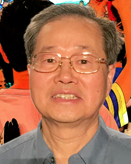
Ting-Wai Chiu Adjunct Research Fellow
Room: P715 | Tel: 27898390 | Email: twchiu_at_phys.ntu.edu.tw
Personal Website:
|
Education |
|
|
Position |
Adjunct Research Fellow |
|
Experience |
|
|
Research Fields |
|

Room: P715 | Tel: 27898390 | Email: twchiu_at_phys.ntu.edu.tw
Personal Website:
|
Education |
|
|
Position |
Adjunct Research Fellow |
|
Experience |
|
|
Research Fields |
|